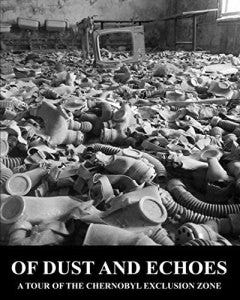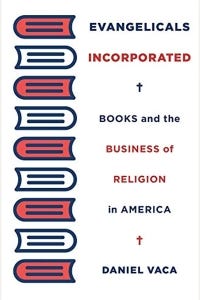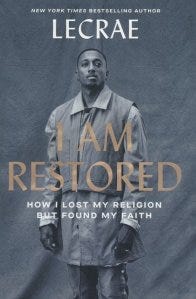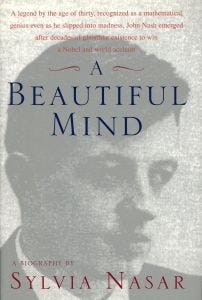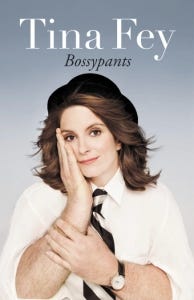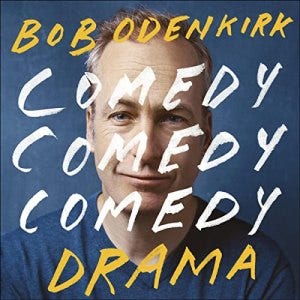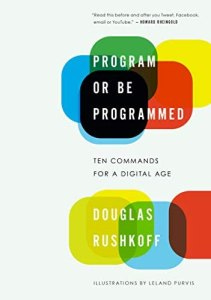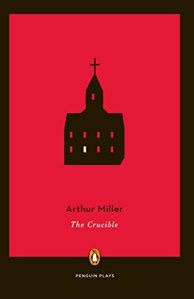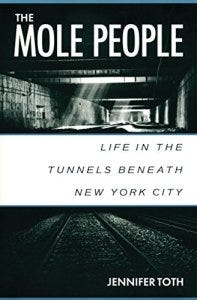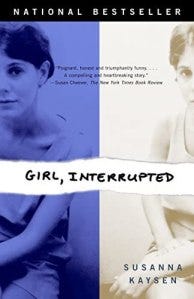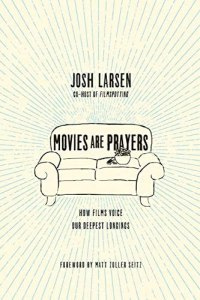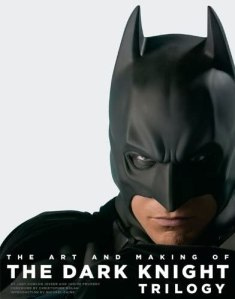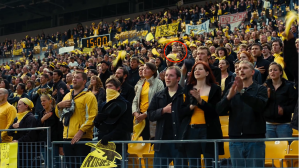53 in 52 – 2022 Recap
I didn’t expect to get to read as much in 2022 as I have in past years, and on that front I was certainly right. Between having an infant and really getting into the writing of my dissertation, it was going to be a bit much to keep up with my typical pace. Still, I knew that I wanted to at least try and keep on reading consistently and so set a 52-book goal, figuring that I’d really have to push myself to keep that up, but it would still be a relatively realistic pursuit.
I was right, and able to meet the goal—and even exceed it, if only by a single book. The toughest part of it was how strategic I needed to be in how I approached what I read, which made it necessary to make some compromises. I read a lot less for pleasure, for instance, this year, and a lot less fiction. Stephen King is one of my favorite authors, and only one of his books made the list this year, and as a tremendously late entry. It was also necessary for me to read a lot of very specific things for research purposes, which meant that I spent a lot of time reading really awful Christian celebrity memoirs. Not my first real choice of what to spend my reading time on, alas.
At the end of the day, though, I was able to meet the goal, and had a lot of fun doing it, honestly, and so wanted to keep my tradition of writing a recap/review alive. Honestly the overall quality of what I read this year, though, was much more middling, so take some of these recommendations with a bit more of a grain of salt than usual, perhaps. (And, please, forgive their brevity, too, it was a bit hard to write at length about some of these books.)
January
Of Dust and Echoes: A Tour of the Chernobyl Exclusion Zone, Silent Bill
The Color of Compromise: The Truth about the American Church’s Complicity in Racism, Jemar Tisby
The Presentation of Self in Everyday Life, Erving Goffman
Celebrity Morals and the Loss of Religious Authority, John Portmann
Of Dust and Echoes: A Tour of the Chernobyl Exclusion Zone – Silent Bill
My year started off necessarily with a bit of a heavy load of theory and other topics related to my research, which made this strange little book all the more fun as a kind of diversion. I’ve always been fascinated by Chernobyl (me and tons of other people, I know), and so this thin book of photographs and memories from the exclusion zone was a fun way of spending time in the topic in a relatively easy way. It also hadn’t been that long since I’d watched the phenomenal HBO Chernobyl limited series, and so seeing their recreation of some of these environment’s side-by-side with the contrasting imagery in this book was something of a delight. The photos in the book are a tad low quality in some places, which was a bit disappointing, but there was also something intriguing about holding a physical volume of photos from the area rather than just seeing the same photos one always sees online. Again, the book ended up being something more akin to a distraction or diversion than an actual in-depth exploration of the topic of Chernobyl and its varied failures, but it was a nice little thing to spend some time poring over.
February
Shaken: Discovering Your True Identity in the Midst of Life’s Storms, Tim Tebow
Make My Day: Movie Culture in the Age of Reagan, J. Hoberman
Live Original: How the Duck Commander Teen Keeps it Real and Stays True to Her Values, Sadie Robertson
Status Update: Celebrity, Publicity, and Branding in the Social Media Age, Alice E. Marwick
Still Growing: An Autobiography, Kirk Cameron
Taking America Back for God: Christian Nationalism in the United States, Andrew L. Whitehead and Samuel Perry
Balancing it All: My Story of Juggling Priorities and Purpose, Candace Cameron Bure
Evangelicals Incorporated: Books and the Business of Religion in America, Daniel Vaca
Evangelicals Incorporated: Books and the Business of Religion in America – Daniel Vaca
Again, lots of research this month. I also somehow managed to keep my streak alive of having February be the month where I read the most, which feels bizarre. Anyways, the book that stood out the most to me this month was Daniel Vaca’s very comprehensive and readable history of the evangelical publishing industry. Vaca provocatively describes modern evangelicalism as a corporate religion and bases his assertion on the prominent and easily demonstrable intermingling of the Christian theology and publishing industries. The early chapters of the book cover the late nineteenth century in a lot of great detail and are instrumental in describing the rise of celebrity pastors even before the modern propaganda machines of advertising were up and running at full throttle. My one critique with this book is that it spends a lot of time in the distant past and not as much as I’d have liked with more recent events, though I suppose that could also be seen as me asking someone to do so me of my work for me. Definitely not the kind of fun history that just anyone would want to curl up with and read, but I enjoyed my time with it.
March
Through My Eyes, Tim Tebow
Unashamed, Lecrae
I Am Restored: How I Lost My Religion But Found My Faith, Lecrae
I Am Restored: How I Lost My Religion But Found My Faith – Lecrae
Lecrae is a fascinating figure and artist to me. I’m not much for his music, specifically, or rap in general, but he’s a deep and intentional thinker, and a good writer. In both of his memoirs I was impressed and even humbled by the utter honesty with which he discusses himself, his problems, and the good and bad of his journey with faith. This was most impressive and interesting in I Am Restored, which deals with his tense modern relationship to contemporary evangelicalism and its culture. Though he’s received quite a bit of backlash for the things he says in this book, I found it really refreshing to see someone on the inside of the Christian culture/media industry critiquing it with such honesty and insight, especially with the foreknowledge that doing so could be a risky career move. The whole genre of Christian memoirs is one that I still very much do not enjoy reading, but Lecrae’s still managed to stand out. They were both certainly better than either of Tebow’s that I read this year.
April
Conspiracy Culture: From the Kennedy Assassination to the X-Files, Peter Knight
The Flag and the Cross: White Christian Nationalism and the Threat to American Democracy, Philp S. Gorski and Samuel Perry
A Beautiful Mind, Sylvia Nassar
Celebrities for Jesus: How Personas, Platforms, and Profits Are Hurting the Church, Katelyn Beaty
Focus on Orson Welles, Ronald S. Gottesman
A Beautiful Mind – Sylvia Nassar
A Beautiful Mind remains, in my opinion, a phenomenal film. I’d owned the book it’s based on for many years, but this year finally managed to find the time to dig into it—and it was really quite unlike what I expected it to be. The style of the book was typical as far as biographies go, and I knew that the content was going to be quite different from the movie, but I was really not expecting just how far-ranging John Nash’s life actually was, and how different the more manic expressions of his illness actually were from the conspiratorial vision depicted in the film. There as, of course, consonance between what was depicted in the film and what was true, but the strangeness, sadness, and depth of Nash’s illness as seen and contained in this book was far more striking than I’d anticipated, and maybe even more interesting than what made it to the screen. Nassar does a striking job rendering Nash’s life and especially his family dynamics in a manner that was as compelling as it was disturbing, and you come away from the book with a surprising level of familiarity and empathy for his struggle.
May
Kick: The True Story of JFK’s Sister and the Heir to Chatsworth, Paula Byrne
Dreamland: The True Tale of America’s Opioid Epidemic, Sam Quinones
Redeem All: How Digital Life is Changing Evangelical Culture, Corrina Laughlin
The Road to Jonestown: Jim Jones and the People’s Temple, Jeff Guin
The Way of the Father: Lessons from My Dad, Truths About God, Michael W. Smith
Bossypants, Tina Fey
Bossypants – Tina Fey
Lest it be said I am too serious or only academically minded, this and next month’s selections hopefully illustrate that I have some fun, too. Tina Fey is a stellar content creator, as evidenced especially by her work on 30 Rock and at least the first season of The Unbreakable Kimmy Schmidt. So, I wasn’t particularly surprised that her book was fun, funny, and smart. Fey’s reflections on motherhood, comedy, and culture were surprisingly relatable, and her attention to the absurdities of her own childhood was quite enjoyable. I’m not convinced there’s anything of great significance or depth in the book that would ever warrant my need to come back to it, but it was funny when it needed to be and that made it extremely worth it.
June
Comedy Comedy Comedy Drama, Bob Odenkirk
House of Leaves, Mark Z. Danielewski
Advice for New Faculty Members, Robert Boice
Norms of Rhetorical Culture, Thomas B. Farrell
Comedy Comedy Comedy Drama – Bob Odenkirk
Better Call Saul is, I’ve maintained amongst my students, colleagues, and friends, my vote for the greatest television drama of all time. And so much of that is attributable to Bob Odenkirk’s stellar turn as Jimmy McGill, which, as many critics have remarked, is especially admirable given his roots as a sketch comedian. I won’t dwell on all that he has to say about his transition to being a dramatic actor, but I do want to point out that in addition to being a great actor and a funny comedian, he’s also an excellent and self-aware writer—which is probably why his acting in both comedy and drama is so good. There were plenty of great anecdotes and guest appearances by famous people and classic comedians in this book. But the best parts were when Odenkirk worked to break down what made particular sketches work, why he approaches comedy the way that he does, and how he thinks about jokes and truth and the meaning of entertainment within culture. I don’t know that I’d go so far as to say that he articulates a whole philosophy of life or entertainment or even comedy, but he certainly has some interesting things to say, all wrapped up in a thoughtful, engaging, even breezy memoir that makes for a simple but pleasurable read.
July
Program or Be Programmed: Ten Commandments for a Digital Age, Douglas Rushkoff
Keywords: A Vocabulary of Culture and Society, Raymond Williams
Program or Be Programmed: Ten Commandments for a Digital Age – Douglas Rushkoff
Amongst media scholars, Douglas Rushkoff is sometimes controversial. He’s famous for coining the term “viral” and has made a career out of (usually correctly) prophesying about the state and future of technology in culture, which are interesting, cool things. But his work also often has a cutting edge to it, not quite adopting a doom-and-gloom posture but certainly doubting the rosy possibilities that some wish to see in our current technological era—which is why some media scholars are less than celebratory about his work. I’ve always found Rushkoff interesting, though. Even where I disagree with him it’s impossible not to answer the provocative questions he asks about where we are and where we’re going with our attitudes and behaviors towards modern media. And I think the darker sides of his observations about media culture have only really ever been proven accurate, at least in the last decade. This particular book of Rushkoff’s is a bit older, but I think supplies a really phenomenal basis for thinking through the ways that technology and the vagaries of digital culture push back into the formation of attitudes, mindsets, and beliefs in real human beings. We think we use digital technologies as our tools, but often they shape us, and in this slim, incisive volume Rushkoff points out some ways in which our tools may be shaping us and asks us to consider important questions about what that means for our uses of technologies and what we expose ourselves to. There are, to be sure, better, more comprehensive books out there on all of these topics. But Rushkoff’s provocative and easily accessible tone make this a good primer, and the questions that he asks his readers to think about are as highly relevant now as they were when the book was first published. I have yet to figure out exactly how I want to incorporate this book into my Media & Society class, but I think hard on it at the beginning of every semester—it’s that kind of book, that I find important enough for myself that I want to share it with others, including my students.
August
Divided by Faith: Evangelical Religion and the Problem of Race in America, Michael O. Emerson and Christian Smith
The Crucible, Arthur Miller
Understanding Evangelical Media: The Changing Face of Christian Communication, Quentin J. Schultze and Robert F. Woods Jr.
The Digital Evangelicals: Contesting Authority and Authenticity After the New Media Turn, Travis Warren Cooper
The Crucible – Arthur Miller
I realized about halfway through this year that I don’t think I’ve ever read a play before. That seemed like something that was worth correcting, and The Crucible seemed like a great place to start. Honestly, I was not expecting the level of prose that was present in the book, which certainly made contextualizing and following the action much clearer. I was also pleasantly surprised at the forcefulness of the personalities that popped right off the page, making the delineation of characters’ beliefs, idiosyncrasies, and ideologies vivid and tangible. I am sure, of course, that much was missed in reading the book rather than seeing the play performed (or, I’ve heard, the movie). But as a first play to really read and dig into this was stellar, and really showed just the absolute force that good writing can have on the imagination of a reader. In fact, I’ve yet to read another play for fear that the experience won’t be anywhere near as good or as captivating, though I intend to remedy this, too, in 2023…
September
The Warsaw Diary of Adam Czerniakow: Prelude to Doom
The Liturgy of Politics, Katelyn Schiess
The Mole People: Life in the Tunnels Beneath New York City, Jennifer Toth
The Corner: A Year in the Life of an Inner-City Neighborhood, David Simon
Cinematic TV: Serial Drama Goes to the Movies, Rashna Wadia Richards
The Mole People: Life in the Tunnels Beneath New York City – Jennifer Toth
One time in the Geneva College bookstore I stumbled on this book as a required text for a sociology class that I never took. The cover and the premise stuck with me though: I was captivated by the idea of a profile of the people living beneath New York City, and a little afraid to actually get and read the book. It felt like it would inevitably be a heavy, heartbreaking read, and I was never quite sure I was ready for that. Fast forward almost ten years and I found a copy at a used bookstore and knew that the time had finally come to check it out. What I found was certainly heavy and certainly heartbreaking, but also at least occasionally strangely hopeful. Toth’s writing is beautiful, and her firsthand chronicle of gaining the trust of some of NYC’s underground residents is harrowing and admirable in its resourcefulness and bravery. The book has a sociological/anthropological eye for detail and scope but is written in a narrative fashion that really makes the chapters fly past. The people that we meet in these pages are, by turn, depressing, admirable, beautiful, and frightening. There are, of course, stories of inequalities and of systemic failures and bad choices and addictions that have led people to a fate that many of us cannot imagine. But there are also stories of triumph, and even some of deliberate choice that make you question the necessity of your own comforts. The situations in which these “mole people” live are more complicated than they seem on the surface (ha), and Toth asks her readers to really stop, slow down, and consider angles and explanations that they never might have alone and asks for her subjects to be seen with charity and humanity and nuance. It’s a captivating read. This is made even more engaging when you delve past the book and into some of its controversies, with external readers, critics, and reviewers questioning some of Toth’s claims, stories, and memories. Given that the book is so old now this is especially intriguing, and there is a wealth of information and resources online dedicated to documenting some of the culture that Toth describes, and to analyzing both it and her record of it. The book itself is a wonderful read and asks lots of great questions; but its value might actually be best for the digging that it inspires in its aftermath.
October
Neoliberal Religion: Faith and Power in the Twenty-First Century, Mathew Guest
Homicide: A Year on the Killing Streets, David Simon
Film Form: Essays in Film Theory, Sergei Eisenstein
Molly’s Game, Molly Bloom
Girl, Interrupted, Susanna Kaysen
Girl, Interrupted – Susanna Kaysen
Not really sure when I came across this book, or how I ended up with a copy, and I knew next to nothing about it before jumping in. But as someone who loved One Flew Over the Cuckoo’s Nest and after reading A Beautiful Mind, the subject of mental health treatment in the 1960s especially was of great interest. But Girl, Interrupted was especially fascinating because of its perspective on girlhood and womanhood and the notion of gender and femininity in society. Especially now, reading the book in 2022, it seems like a bizarre time capsule of a cruel and sad era that refused to listen to or even try to understand young women, most of whom were engaging in practices and trying to communicate feelings that are understood as absolutely typical and commonplace now. In that sense, this book was much sadder to me than The Mole People ended up being, even as both depicted the dysfunctions of culture and their impact on individuals. Some of the subjects in The Mole People were certainly victims, certainly, but none seemed quite as misunderstood or innocent as those found in these pages. The self-awareness of this memoir also caught me off guard. Kaysen writes of this experience from some distance, but I found her recollections to be vivid and arresting, and in many ways it seemed that she’d never quite left her confused, hurt, and misunderstood teenaged self behind—a reality that was, of course, heartbreaking, but nonetheless made for a highly engaging memoir. Knowing as little as I did about this when I started it, I didn’t have especially high expectations for the book; but I was very pleasantly surprised with the melancholic hopefulness I found inside.
November
Camgirls: Celebrity and Community in the Age of Social Networks, Theresa M. Senft
Movies Are Prayers: How Films Voice Our Deepest Longings, Josh Larsen
Speaking Into the Air: A History of the Idea of Communication, John Durham Peters
The Ruthless Elimination of Hurry: How to Stay Emotionally Healthy and Spiritually Alive in the Chaos of the Modern World, John Mark Comer
Movies Are Prayers: How Films Voice Our Deepest Longings – Josh Larsen
The question of how to reconcile or balance faith and film is something that has animated me in both my personal and professional life for a long time. I think about these questions a lot, and about how to deal with the multiple and complex pressures of established faith traditions and beliefs, the wider culture of film, and the often strange interactions of the two that can be made vivid through great art. Josh Larsen’s book exists in that same sphere of Christian culture and thought, and I really appreciated its attempt at showing how these two seemingly disparate spheres actually often mesh in interesting, even surprising ways. The book is not perfect, by any means. At one level it sort of ended up feeling like a list of good movies to watch with some general theological discussion as a justification for why those movies make sense to watch. Which, to be fair, is something that is needed. But I never quite felt like Larsen ever totally captured the essence of some of the movies that he recommends; he notes in the introduction that he’s going to try and do just this, but I never quite felt like he drilled down deep enough into any specific example, scene, summary, or reflection to really deliver on that promise. That doesn’t mean that this is a bad book, by any means. But I’d argue it’s more of a starting point for reflecting more deeply and intentionally on faith and film than it is any kind of comprehensive statement on the topic. The list of movies that he recommends really is great, though, which could maybe make it a worthwhile purchase for some just in that regard.
December
You Lost Me: Why Young Christians Are Leaving the Church And Rethinking Faith, David Kinnaman
The Tommyknockers, Stephen King
The Art and Making of The Dark Knight Trilogy, Jody Duncan Jesser and Janine Pourroy
The Art and Making of the Dark Knight Trilogy – Jody Duncan Jesser and Janine Pourroy
So it feels wrong to have only read one Stephen King book in a year, and it feels somehow worse to not have it as my favorite book in the month that I read it. But as much as I liked The Tommyknockers (and I did), reading this giant coffee table book about The Dark Knight Trilogy was actually definitely the highlight of my December reading. I often tell my students that I think I like movie special features more than I actually like movies, and this book was a perfect way to scratch that itch. Now, I have read books like this one in the past about other movies and have mostly come away unimpressed. This genre is filled with surface-level examinations that basically just repeat quotes from studio press releases and press kits with little added value. There’s some of that here, to be sure, but in general this read to me like the epitome of an art/design-focused glimpse behind the curtain of a major Hollywood production. The chapters were genuinely interesting, filled with unique trivia, quotes, and detailed explanation of production processes, and the accompanying art was always beautiful and added to the narrative rather than just sort of existing alongside it. There was just something so fun about the book that made it a blast to really dig into, and so I felt it was worthy of highlighting as just a great reading experience to close out the year. (It was also really just fun reading about the Pittsburgh portion of shooting The Dark Knight Rises since I was there for it—proof below, since I’m actually not sure I’ve ever posted this picture anywhere before.)
So, that was 2022. For 2023 I think I ought to be able to get back to something like ~75 books for the year once some school stuff settles down in the first half of the year and I have more time to spend on reading both for pleasure and for work…but I’m also going to give myself a little bit of breathing room in my goals. To that end I think I’ve settled on 52 as my goal for 2023. Reaching the end of the year and hitting a reading goal always feels like it should be tiring and make getting the next year started a daunting task. What I’ve found, though, is that the close of each year just gets me excited about all the possibilities for the next; it makes me wonder about what mental worlds I’ll get to inhabit, what new topics I’m going to learn about, and what ideas are going to challenge me. 2022 was a great year for reading. But I’m already looking forward to what 2023 has in store.


